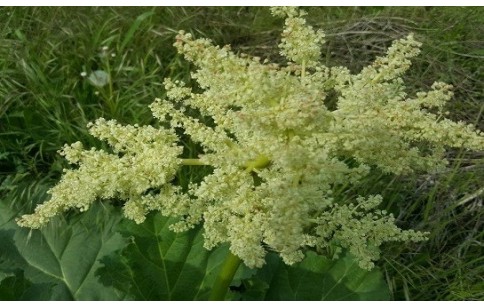- Code : #0452 S 20 mg
- Formula : C₁₅H₁₀O₄
- CAS : 481-74-3
Rheum rhaponticum
Rheum rhaponticum, called “Rhapontic, “False rhubarb” in English and “Rhubarbe sauvage” in French, belongs to the Polygonaceae botanical family. Native to Europe to East Asia and Siberia, it is a herb growing to 1.2 m on wet mountain rocks.
The leaf is toxic but its stem is edible, mostly eaten cooked in tart due to its acid flavor.
Rhubarb root has a long history of herbal usage, mostly as a treatment of the digestive system (chronic constipation, diarrhea, liver and gall bladder complaints), but also to treat hemorrhoids, menstrual problems and skin eruptions. Externally, it is used in the treatment of burns.
The roots contain various hydroxystilbenes (derivatives of trans-piceatannol, trans-resveratrol, trans-rhapontigenin and trans-deoxyrhapontigenin), pterostilbene acetylglucosides and several hydroxyanthraquinones and their glycosides.

- Code : #4744 S 10 mg
- Formula : C₂₁H₂₄O₈
- CAS : 30197-14-9
- Code : #0453 S 20 mg
- Formula : C₁₅H₁₀O₅
- CAS : 518-82-1
- Code : #0454 S 20 mg
- Formula : C₁₆H₁₂O₅
- CAS : 521-61-9
- Code : #4743 10 mg
- Formula : C₁₄H₁₂O₄
- CAS : 10083-24-6
- Code : #4974 S 20 mg
- Formula : C₂₀H₂₂O₈
- CAS : 27208-80-6
- Code : #4963 S 20 mg
- Formula : C₁₄H₁₂O₃
- CAS : 501-36-0
- Code : #4740 S 10 mg
- Formula : C₂₁H₂₄O₉
- CAS : 155-58-8









